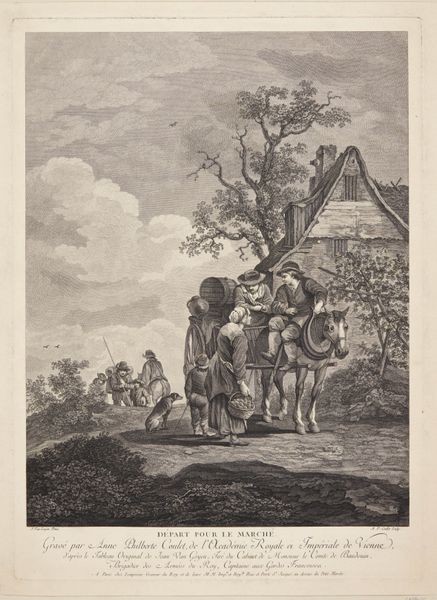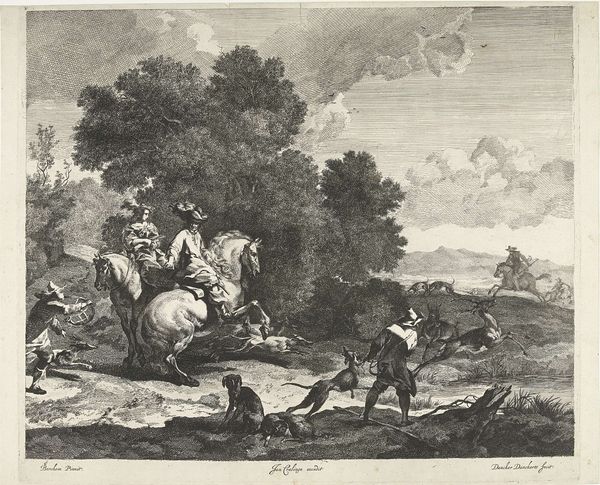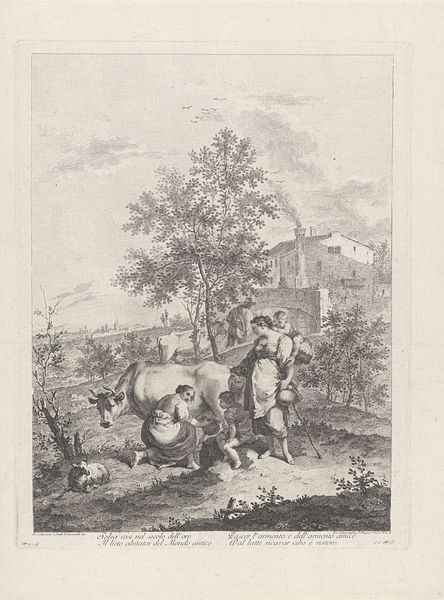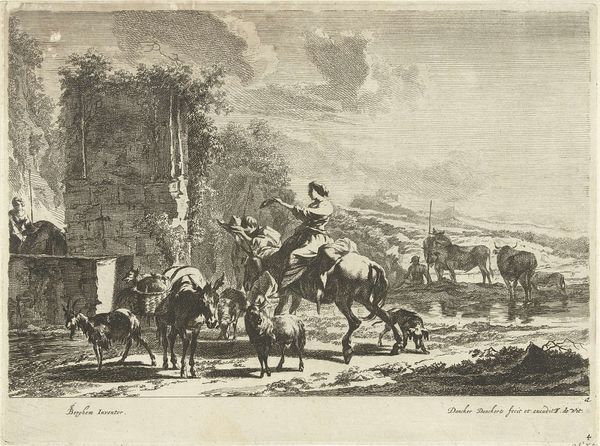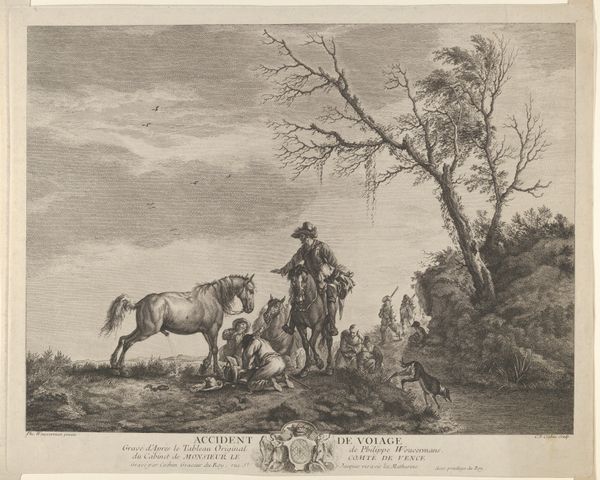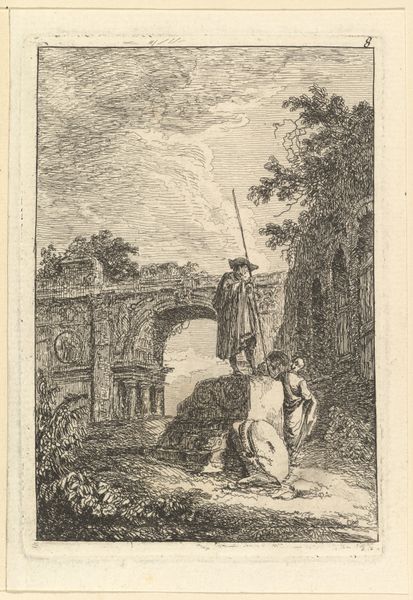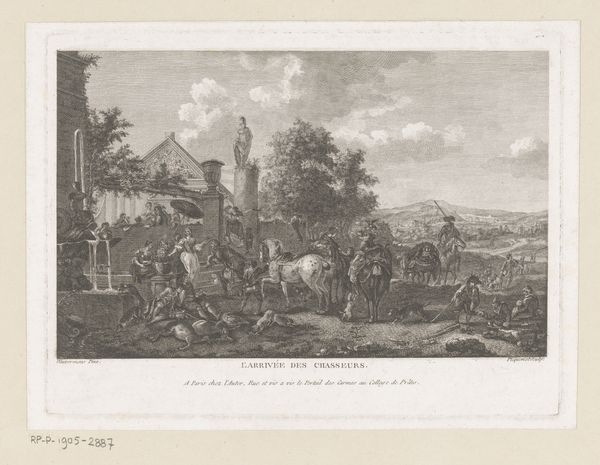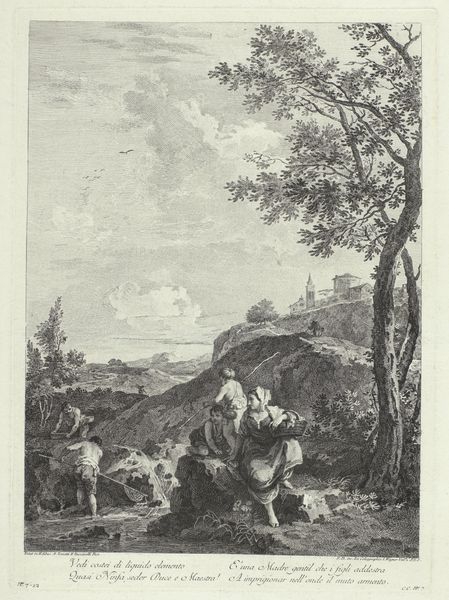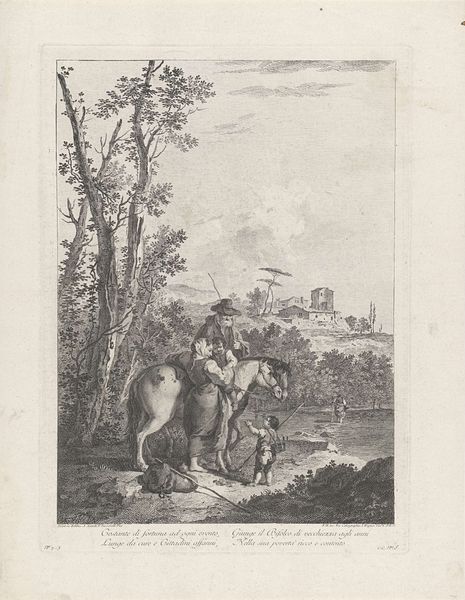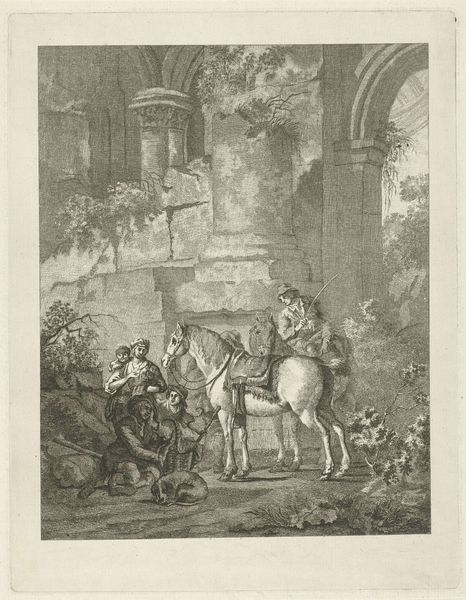
drawing, print, etching, graphite, engraving
#
drawing
#
neoclacissism
# print
#
etching
#
landscape
#
pencil drawing
#
graphite
#
genre-painting
#
history-painting
#
graphite
#
engraving
Dimensions: 438 mm (height) x 320 mm (width) (plademål)
Curator: Look closely at this etching, "Le Rendez-vous à la Colonne," created around 1770 by Anne Philiberte Coulet. It is currently housed in the Statens Museum for Kunst. Editor: It's arresting! The pastoral scene with livestock and a crumbling column feels charged with tension. The body language speaks volumes; a woman in mid-stride carries another in her arms, as onlookers gather. There’s something a little performative about it, a story playing out. Curator: The title translates to "The Rendezvous at the Column," and it speaks directly to the neoclassical era, where historical and mythological themes were repurposed to convey moral lessons or allegorical narratives. This print exemplifies the way such ideas would then circulate and inform public tastes. It’s worth noting that Coulet produced this print after an original painting by Nicolaes Berchem, reflecting a common practice of the time to disseminate paintings more widely via printmaking. Editor: Exactly! Considering that broader context makes the image so interesting to me. Who is having the rendezvous, and why is she being carried? What stories were being told to justify men seated whilst women moved—literally carrying other women! Knowing this was circulated, the power dynamics embedded here raise so many questions around societal expectations, physical labor, and women’s roles. Curator: The classical ruin suggests the weight of history bearing down upon these figures, perhaps symbolizing a world undergoing shifts. Remember, these kinds of bucolic prints often idealised rural life for an urban, often aristocratic audience. There is some indication based on historical accounts, however, that Berchem may have focused on scenes reflecting his travels and direct encounters with pastoral scenes in the southern countryside of Europe. Editor: I can see the artist leaning into that imagined ideal here, a space teeming with narratives begging for deconstruction and unpacking around labor and access. Thinking about whose perspectives and lived realities were and still aren’t often centred is especially pertinent when we consider such historical artworks. Curator: Well said. Ultimately, Coulet’s work provides a valuable opportunity to delve into those social landscapes. Editor: Absolutely. By critically engaging with the artwork, we unveil hidden narratives that continue to resonate in today's dialogues.
Comments
No comments
Be the first to comment and join the conversation on the ultimate creative platform.
